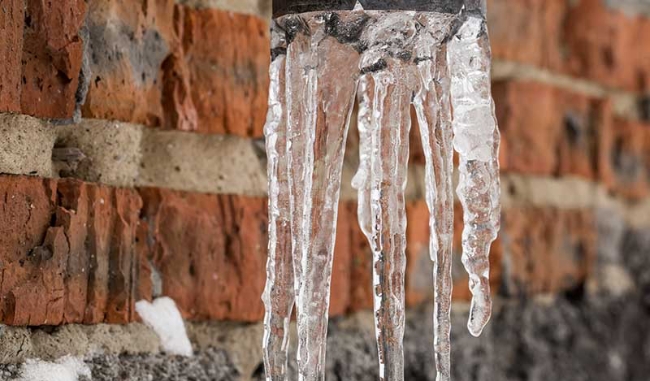Protecting Against Frozen Plumbing: Best Strategies for Cold Weather
Protecting Against Frozen Plumbing: Best Strategies for Cold Weather
Blog Article
They are making a number of good pointers about How to Prevent Your Pipes From Freezing overall in this great article in the next paragraphs.

Winter can ruin your pipes, specifically by freezing pipelines. Below's exactly how to avoid it from occurring and what to do if it does.
Intro
As temperatures drop, the threat of icy pipes boosts, potentially leading to expensive repairs and water damage. Recognizing how to prevent frozen pipes is crucial for property owners in chilly environments.
Recognizing Frozen Pipes
What triggers pipelines to ice up?
Pipes freeze when revealed to temperature levels below 32 ° F (0 ° C) for extended durations. As water inside the pipelines ices up, it increases, taxing the pipe wall surfaces and possibly creating them to rupture.
Risks and problems
Icy pipes can lead to water disruptions, residential property damage, and pricey fixings. Burst pipelines can flood homes and create substantial structural damages.
Indicators of Frozen Piping
Identifying frozen pipelines early can prevent them from breaking.
How to determine frozen pipelines
Look for decreased water circulation from faucets, uncommon odors or sounds from pipes, and noticeable frost on revealed pipelines.
Prevention Tips
Insulating prone pipelines
Cover pipes in insulation sleeves or make use of heat tape to protect them from freezing temperatures. Concentrate on pipelines in unheated or outside areas of the home.
Heating methods
Keep interior rooms sufficiently heated up, especially areas with pipes. Open cabinet doors to allow cozy air to distribute around pipelines under sinks.
Securing Outside Plumbing
Yard hose pipes and outside faucets
Separate and drain garden tubes before winter season. Mount frost-proof faucets or cover exterior faucets with insulated caps.
What to Do If Your Pipes Freeze
Immediate actions to take
If you think icy pipelines, maintain taps open up to soothe stress as the ice melts. Use a hairdryer or towels soaked in hot water to thaw pipes slowly.
Long-Term Solutions
Structural changes
Take into consideration rerouting pipelines far from outside wall surfaces or unheated areas. Include extra insulation to attic rooms, cellars, and crawl spaces.
Updating insulation
Purchase high-grade insulation for pipelines, attics, and walls. Correct insulation assists maintain regular temperature levels and lowers the danger of frozen pipelines.
Final thought
Stopping frozen pipelines needs proactive actions and quick responses. By recognizing the causes, indications, and safety nets, home owners can safeguard their plumbing during winter.
5 Ways to Prevent Frozen Pipes
Drain Outdoor Faucets and Disconnect Hoses
First, close the shut-off valve that controls the flow of water in the pipe to your outdoor faucet. Then, head outside to disconnect and drain your hose and open the outdoor faucet to allow the water to completely drain out of the line. Turn off the faucet when done. Finally, head back to the shut-off valve and drain the remaining water inside the pipe into a bucket or container. Additionally, if you have a home irrigation system, you should consider hiring an expert to clear the system of water each year.
Insulate Pipes
One of the best and most cost-effective methods for preventing frozen water pipes is to wrap your pipes with insulation. This is especially important for areas in your home that aren’t exposed to heat, such as an attic. We suggest using foam sleeves, which can typically be found at your local hardware store.
Keep Heat Running at 65
Your pipes are located inside your walls, and the temperature there is much colder than the rest of the house. To prevent your pipes from freezing, The Insurance Information Institute suggests that you keep your home heated to at least 65 degrees, even when traveling. You may want to invest in smart devices that can keep an eye on the temperature in your home while you’re away.
Leave Water Dripping
Moving water — even a small trickle — can prevent ice from forming inside your pipes. When freezing temps are imminent, start a drip of water from all faucets that serve exposed pipes. Leaving a few faucets running will also help relieve pressure inside the pipes and help prevent a rupture if the water inside freezes.
Open Cupboard Doors
Warm your kitchen and bathroom pipes by opening cupboards and vanities. You should also leave your interior doors ajar to help warm air circulate evenly throughout your home.

Do you enjoy reading about How To Avoid Freezing Pipes? Post a review down the page. We would be happy to hear your reactions about this entry. Hoping that you visit us again in the near future. Be sure to take the time to share this blog if you enjoyed it. Thanks so much for going through it.
Click Here Report this page